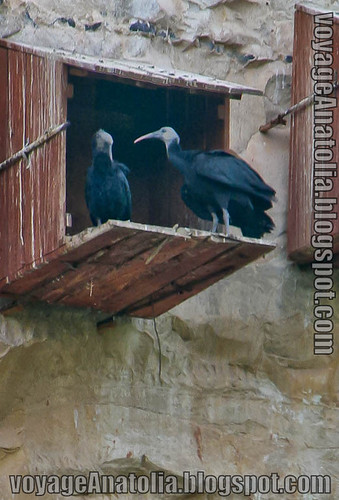 The Northern Bald Ibis was once widespread across the Middle East, northern Africa, southern and central Europe, with a fossil record dating back at least 1.8 million years. It disappeared from Europe over 300 years ago, and is now considered critically endangered. There are believed to be about 500 wild birds remaining in southern Morocco, and fewer than 10 in Syria, where it was rediscovered in 2002. To combat this ebb in numbers, recent reintroduction programs have been instituted internationally, with a semi-wild breeding colony in Turkey, as well as sites in Austria, Spain, and northern Morocco.
The Northern Bald Ibis was once widespread across the Middle East, northern Africa, southern and central Europe, with a fossil record dating back at least 1.8 million years. It disappeared from Europe over 300 years ago, and is now considered critically endangered. There are believed to be about 500 wild birds remaining in southern Morocco, and fewer than 10 in Syria, where it was rediscovered in 2002. To combat this ebb in numbers, recent reintroduction programs have been instituted internationally, with a semi-wild breeding colony in Turkey, as well as sites in Austria, Spain, and northern Morocco.Critically Endangered is the highest risk category assigned by the IUCN Red List for wild species before extinction. Critically Endangered means that a species' numbers have decreased, or will decrease, by 80% within three generations.
As the IUCN does not consider a species extinct until extensive, targeted surveys have been conducted, species which are possibly extinct are still listed as 'Critically Endangered.'
PHOTO: Critically Endangered Northern Bald Ibis at artificial nest at Birecik Urfa Turkey.
